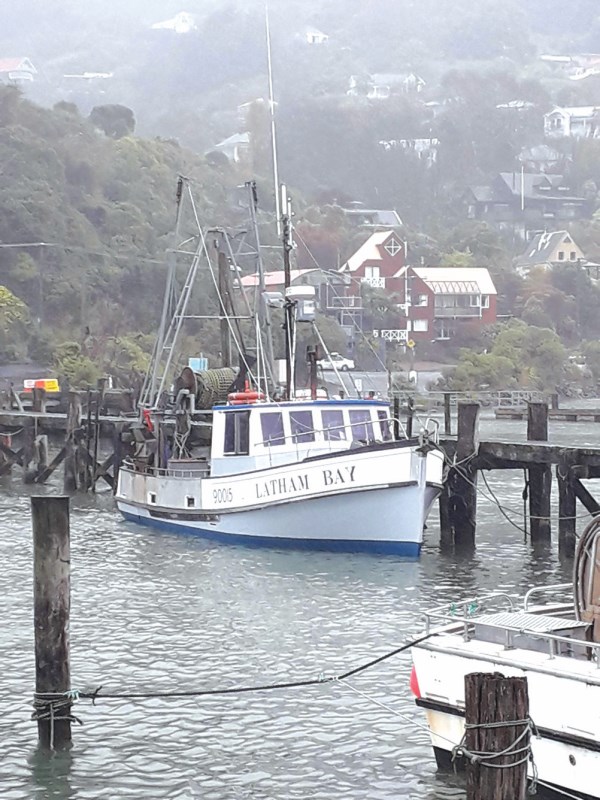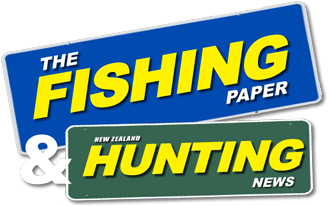
Nathan Hines from Timaru fishes solo in the mixed fishery in the Canterbury Bight. He skippers Latham Bay, a 12m trawler. He’s 41 years old and has been in the industry since he was 16 and straight out of school. He is a dad to two, including a new baby who is just three weeks old.
If I had one thing I’d really like people to know about the life of a fisherman, it’s what a good life it can be. If you’re prepared to roll your sleeves up and do some hard graft, it’s such a rewarding and enjoyable lifestyle that a land job would struggle to match. That is something that always rings true when I think of my time so far.
That’s not to say it’s easy. It is tough out there right now. My turnover each year is my wage. Costs are high. Any extra compliance costs mean bread off my table. It’s not just compliance costs; it’s everything; everything has been up in the last three years. Berthage fees go up every year. Even the cost of anti-foul has tripled in the previous three years. Don’t even want to mention fuel.
But the price we get for fish has yet to keep pace. I go into the supermarket and see a whole kahawai for $20; well, I get $1 of that. And that’s not including the cost to catch. And I think in fishing, we feel it’s death by 1,000 cuts. When I started this business, there were nine day-fishermen in Timaru. A decade later, there are just two of us. When you think about that, it makes you wonder if the end is inevitable.
But it’s an awesome profession. I love it. I will do it for as long as I can. I do it because of the call of the sea. It’s the anticipation of the catch. It’s the same excitement as catching a big fish on a rod. Every time you haul up the bag, it’s exciting. It’s also beautiful out there. When I’m out, and I get that view of Mt Cook poking out of the clouds, you can’t beat that. It’s a nice feeling.
I’ve got a background in net making as well as fishing. After my first 14 months at sea as a teenager, I went to the net sheds and learnt to build trawl nets. This gave me a skeleton key to the industry because every skipper wants you when you have those skills. And even now, I am building nets for several people in the industry. I’ve experimented with designing different net types, mesh sizes and orientations to reduce bycatch.
I’m not paid to catch shells and sand and want to avoid catching small fish. If I can leave them in the water, then they get more breeding seasons. The new gear is good for the industry as a whole; if we’re all reducing bycatch, it helps everyone. It also helps improve fuel efficiency. I feel like I’ve got the right net design nailed now, but there are always things to tinker with.
I’ve also been involved in a study into how Hector’s dolphins interact with trawl gear. The study was funded by MPI. I worked alongside Jasco Applied Sciences on the design and placement of hydrophone equipment on my trawl doors, then was left to go about my fishing. I spent 23 sea days with the equipment listening to and recording the dolphins so we could count and locate them and monitor their activities.
We love seeing the dolphins out there. I always fish around them; I call them my fishing buddies. They are very smart and know how to use the trawl vessels to help get their own catch. But we never want to catch one. I’ve never caught a dolphin, although the risk is always there.
Dolphins are bloody intelligent and fast, so the risk to them, for the most part, is low. It’s when we make a change, like when we haul/shoot the gear or when we turn, that the risk increases. Part of the study was to look at how effective the dolphin dissuader device is at keeping dolphins away. It’s about finding a way to ensure their safety but not push them out of the area. It was interesting stuff, but more funding is needed to develop a remote dolphin dissuader device that keeps dolphins away from the gear at times of high risk.
As I said, we don’t want to push the dolphins out, but we don’t want to be pushed out, either. The talk about new marine reserves that comes up every year or two is very stressful. As an artisan-style day-trawler, if these reserves they’ve been talking about go ahead, it would be the end for me, and that has a significant impact. It nearly tears the eye because I love fishing and want to keep doing it.
For a young person getting into fishing, the opportunity is massive. If you keep clean, learn everything you can, add that seatime up and get those tickets, you can aim for the driver’s seat. That is the best seat in the house.












